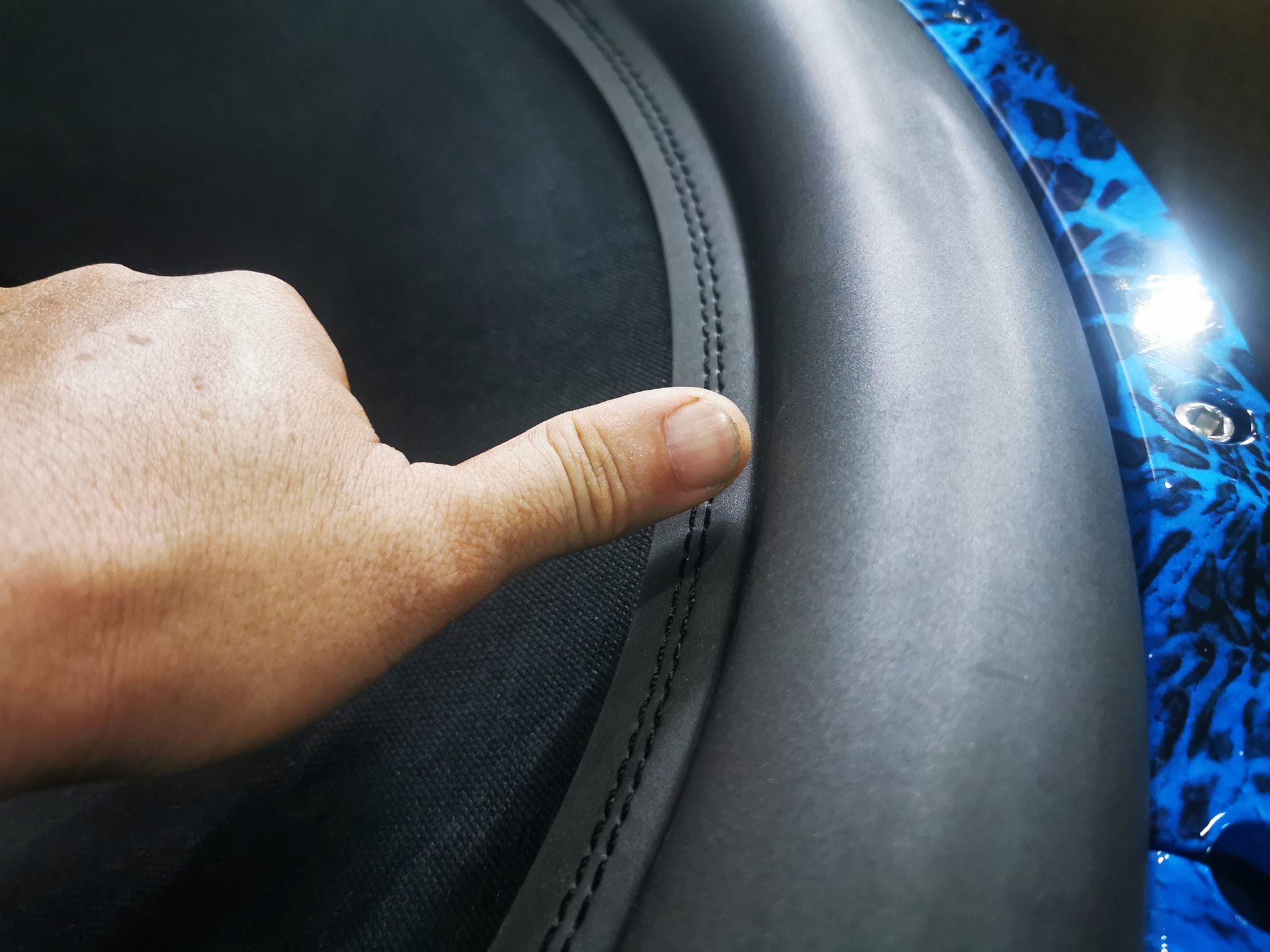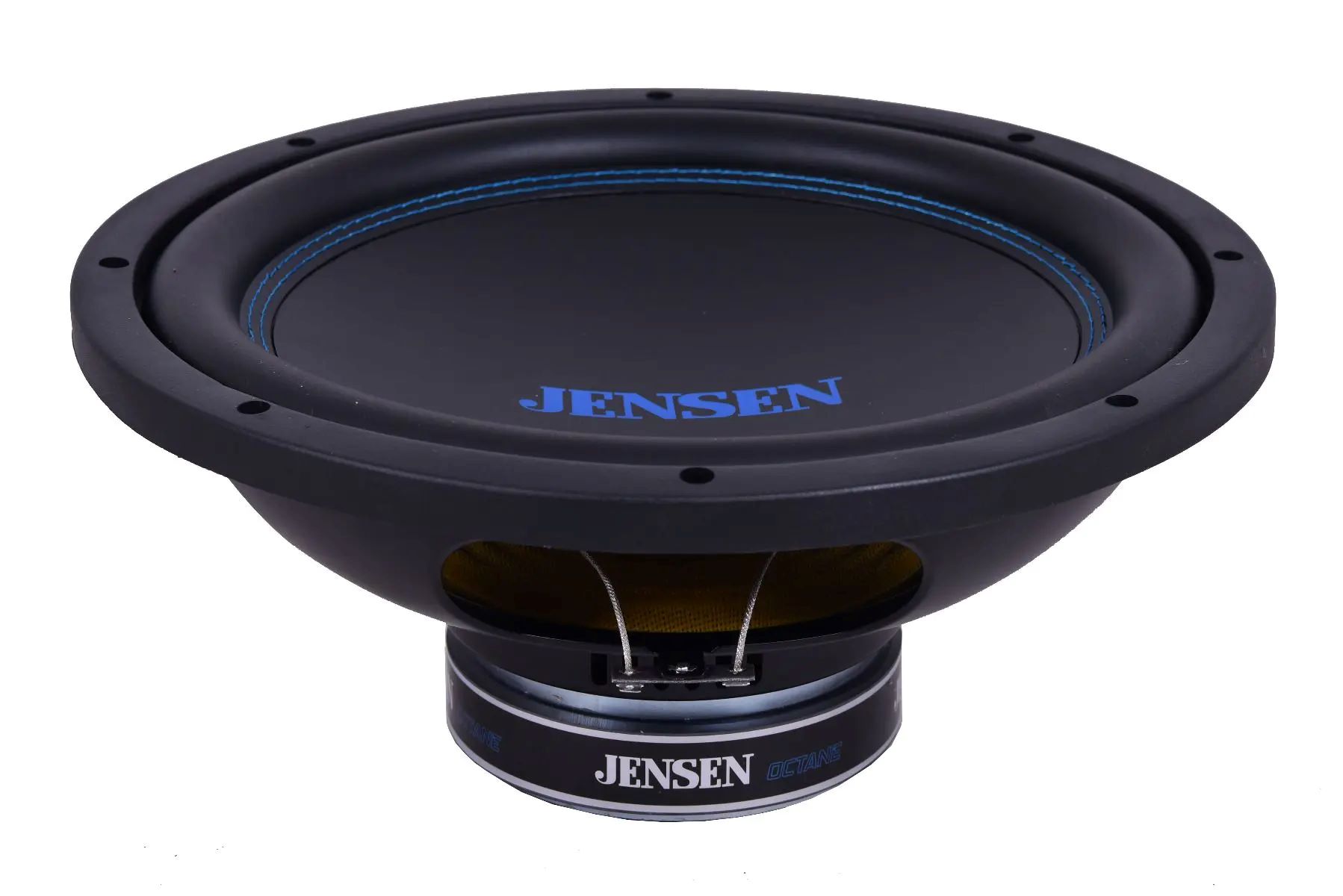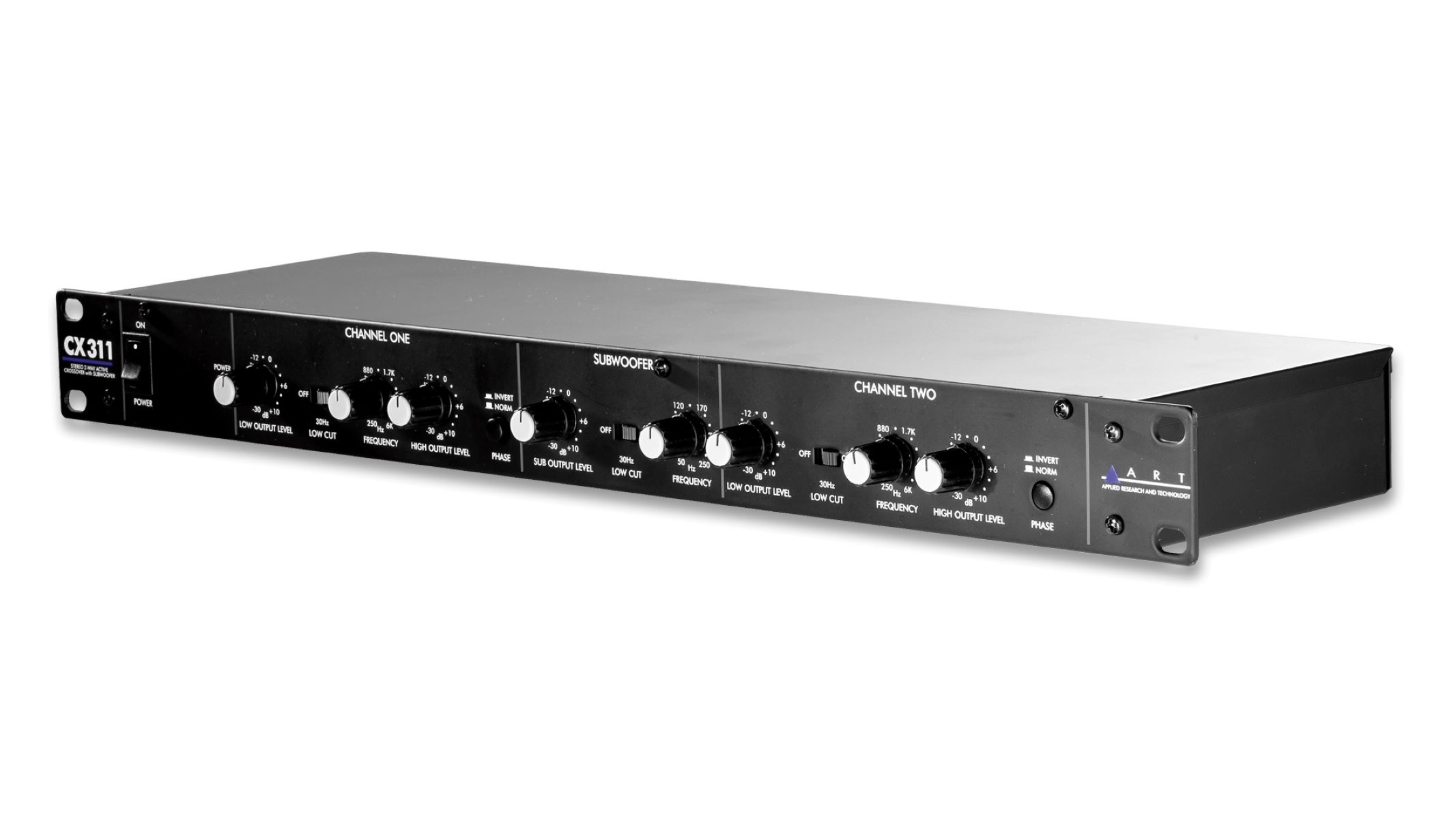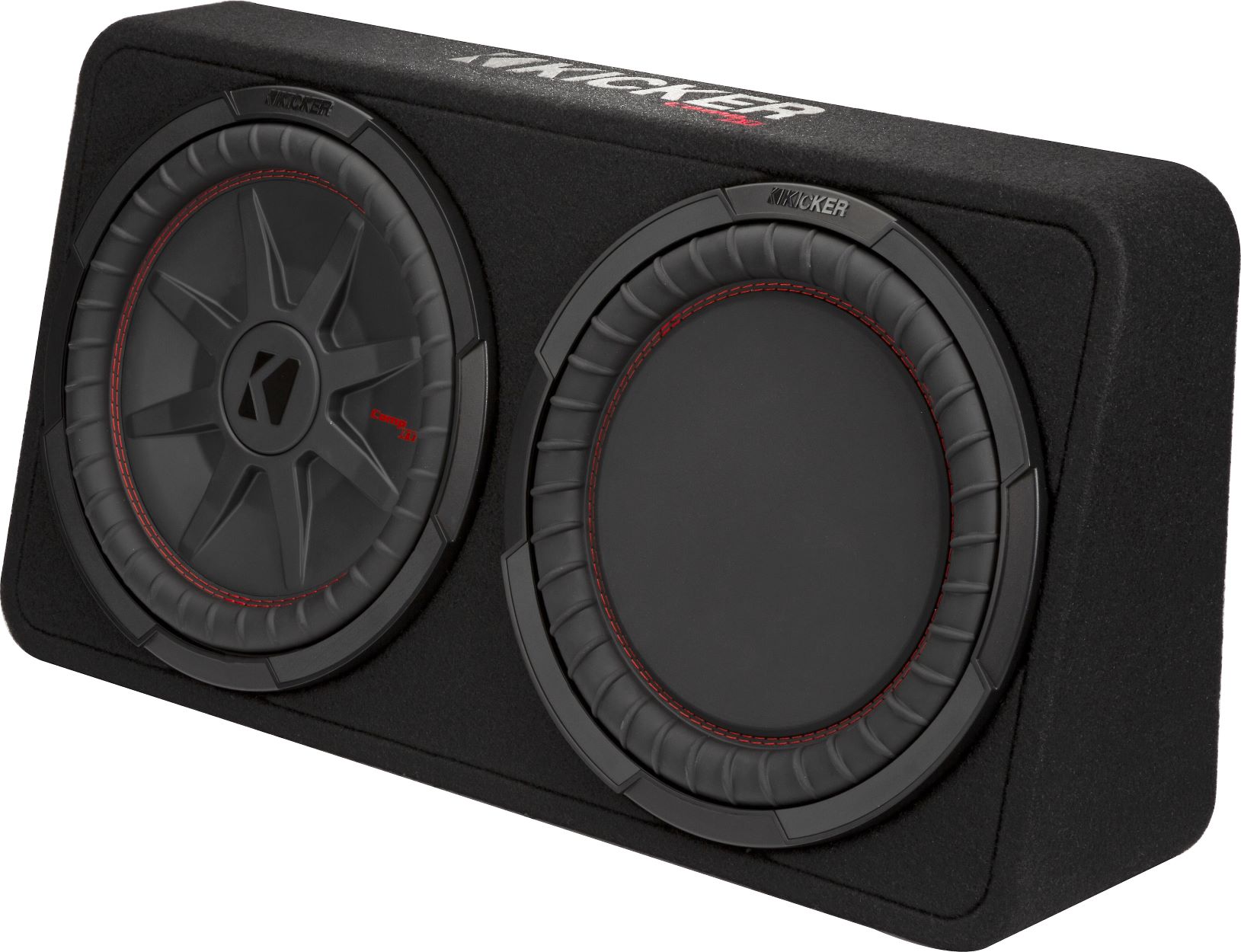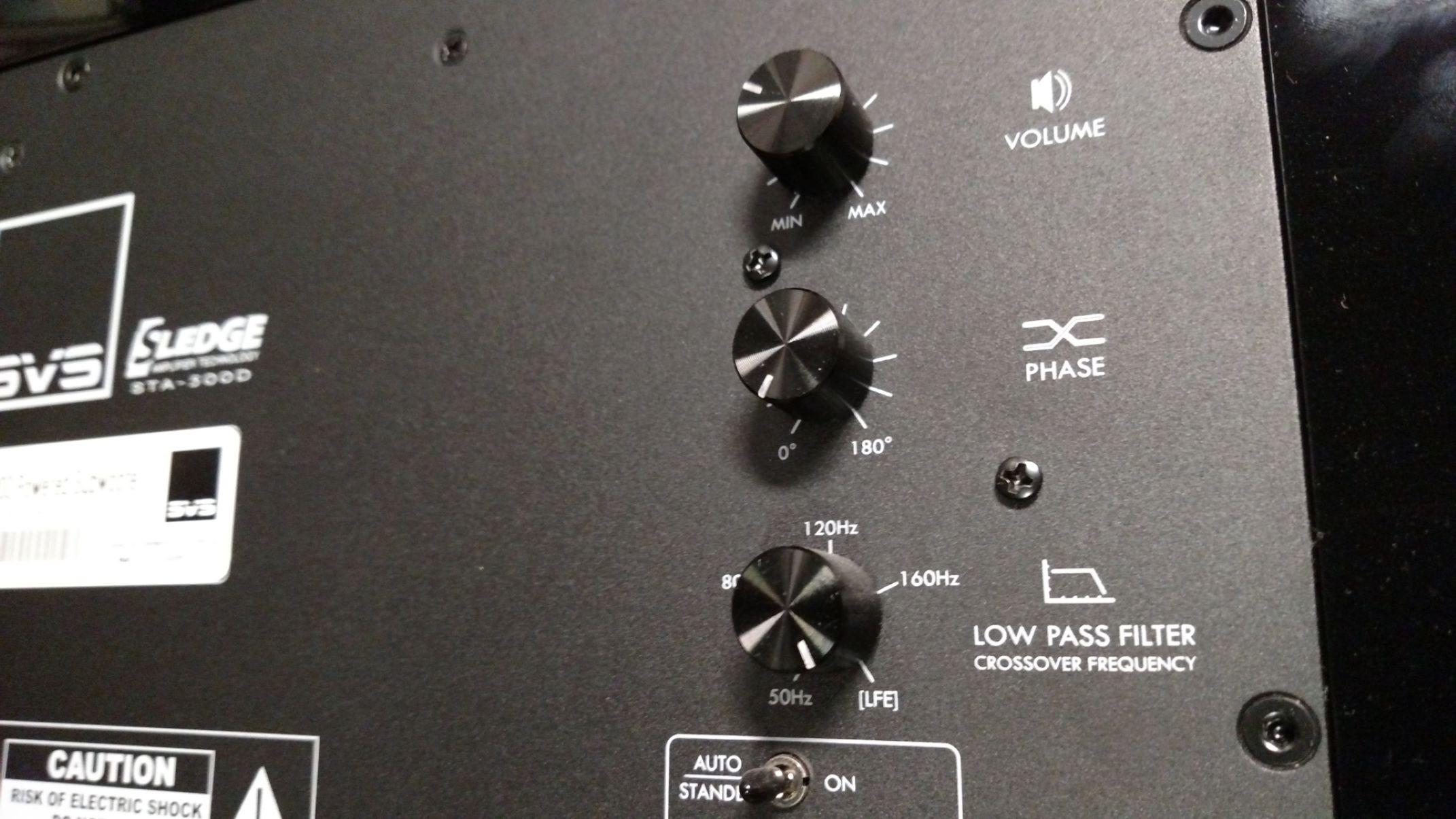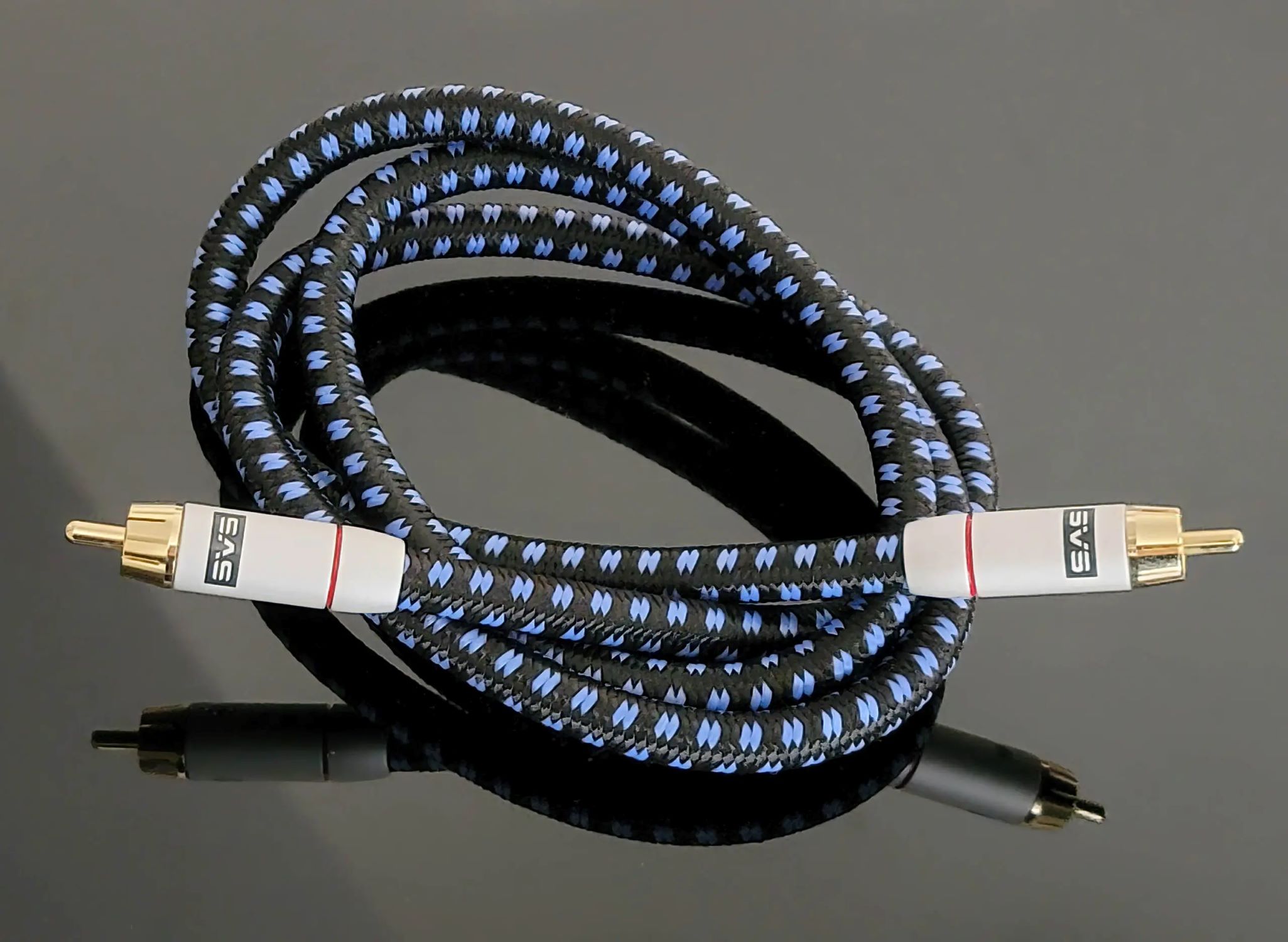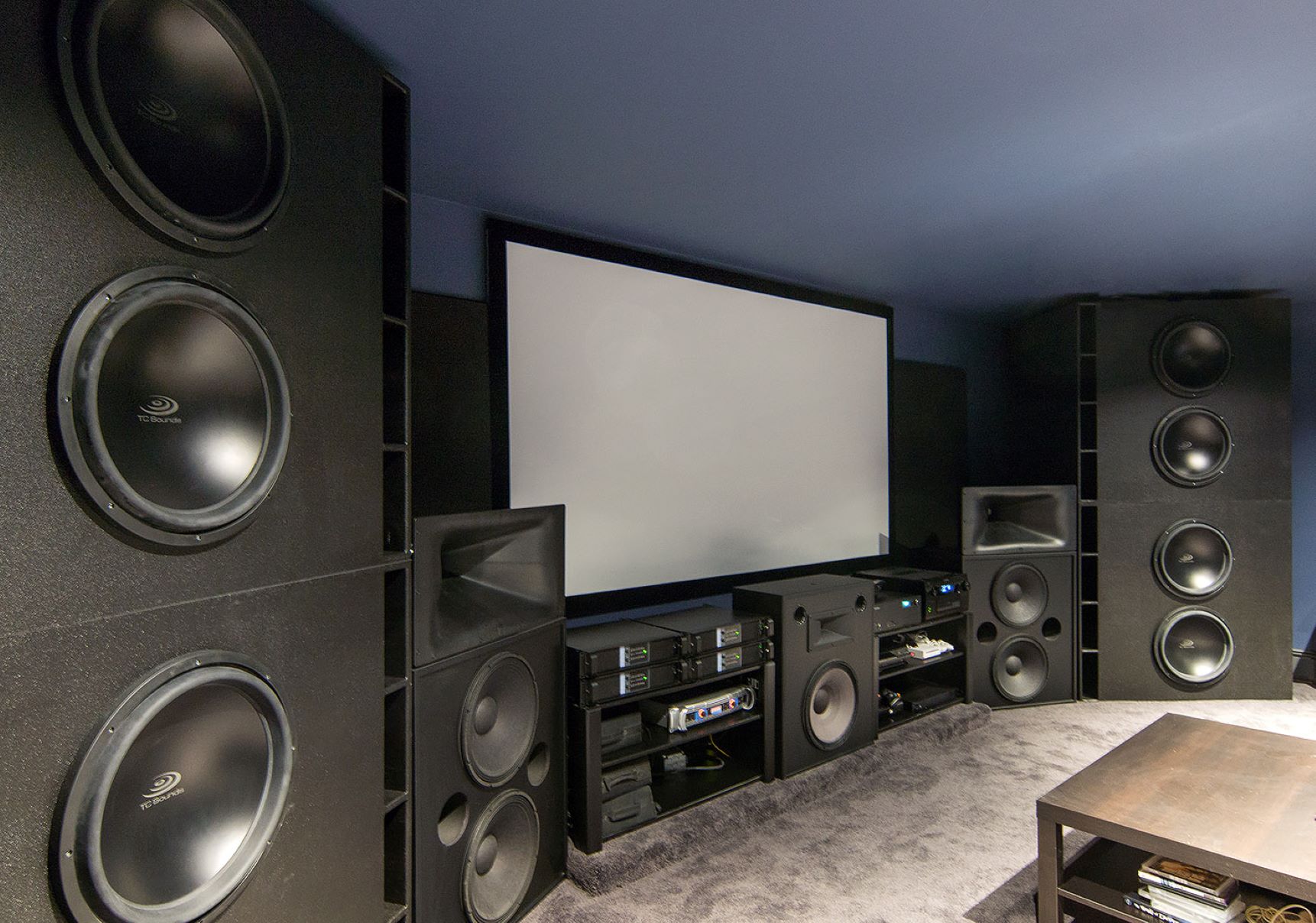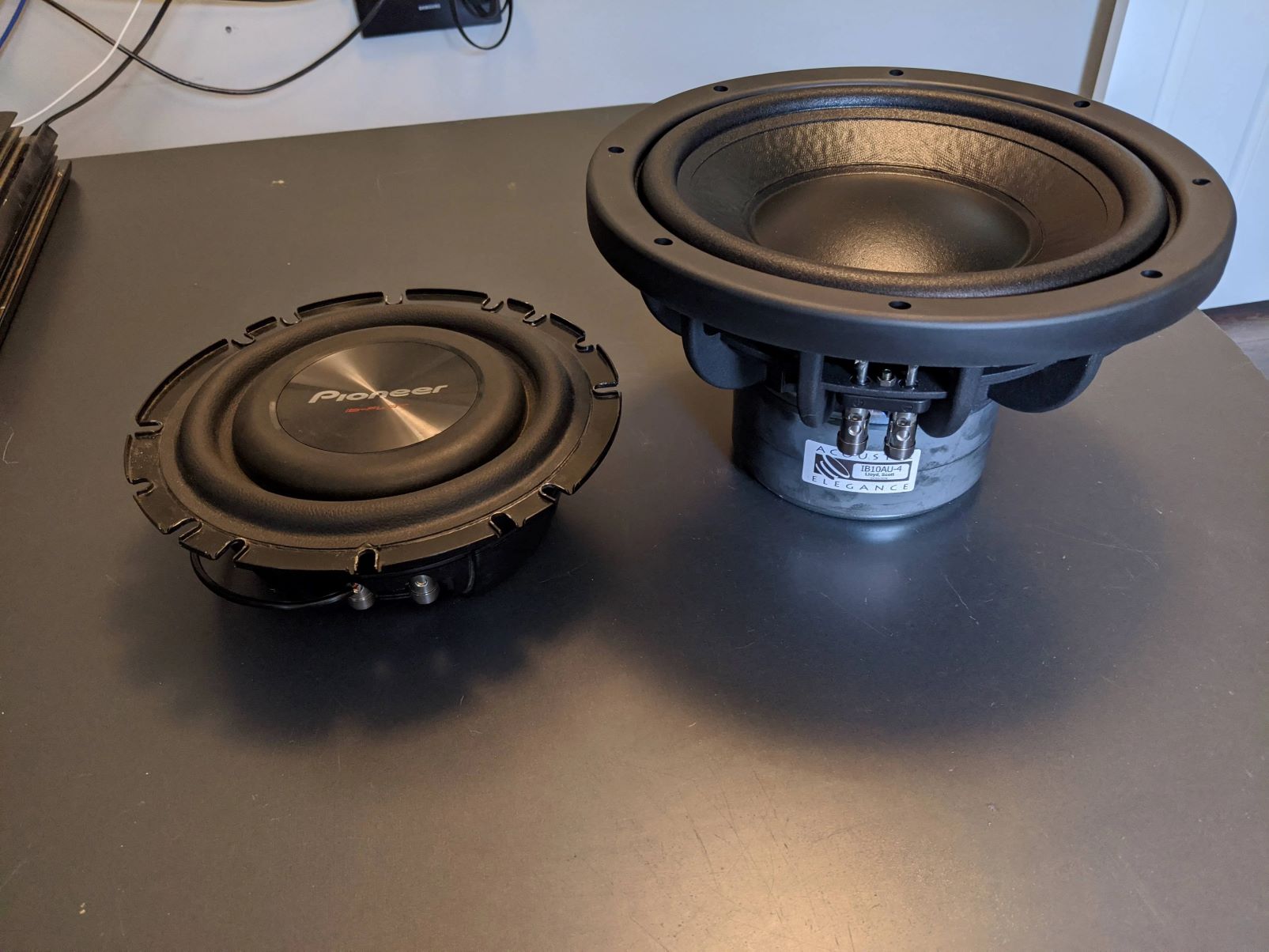Home>Devices & Equipment>Subwoofer>What Is A Component Subwoofer


Subwoofer
What Is A Component Subwoofer
Modified: February 18, 2024
Discover the powerful impact of a subwoofer with our guide on what a component subwoofer is. Enhance your audio experience and feel the deep bass like never before.
(Many of the links in this article redirect to a specific reviewed product. Your purchase of these products through affiliate links helps to generate commission for AudioLover.com, at no extra cost. Learn more)
Table of Contents
- Introduction
- What Is a Component Subwoofer?
- Key Features of Component Subwoofers
- Benefits of Using a Component Subwoofer
- Types and Configurations of Component Subwoofers
- Factors to Consider When Choosing a Component Subwoofer
- Installation and Placement of Component Subwoofers
- Common Misconceptions About Component Subwoofers
- Maintenance and Care for Component Subwoofers
- Conclusion
Introduction
Welcome to the world of deep bass and immersive sound experience. In the realm of audio systems, subwoofers play a crucial role in enriching the overall quality of sound. Among the various types of subwoofers available, a component subwoofer stands out for its exceptional performance and versatility. Whether you’re a professional audiophile or a casual music lover, understanding the fundamentals of component subwoofers can greatly enhance your audio setup.
A component subwoofer, as the name suggests, is a separate speaker component dedicated solely to reproducing low-frequency sounds. It complements the main speakers in a sound system by focusing on the bass frequencies, delivering deep, powerful, and impactful rumbles that can be felt as much as they can be heard.
Comprised of a separate subwoofer driver and an individual enclosure, component subwoofers allow for maximum low-frequency response and customization. This separation also enables better control over the sound, ensuring clean and accurate bass reproduction without interfering with the performance of other speakers in the system.
One of the key features of component subwoofers is their ability to handle a wide range of frequencies, typically starting from 20Hz and going up to 200Hz or beyond. This extended frequency response ensures that you not only hear the low-end notes but also feel their full impact, immersing yourself in the depth and richness of the audio.
Component subwoofers come in various sizes, from compact 8-inch models to massive 15-inch ones, allowing you to choose a size that best suits your space and power requirements. They also offer flexibility in terms of installation options, with both sealed and ported enclosures available to cater to different acoustic preferences and room sizes.
Whether you’re a music enthusiast looking to enhance your home theater experience or a car audio aficionado in pursuit of thunderous bass on the road, a component subwoofer can take your audio setup to the next level. In the following sections, we will delve deeper into the key features, benefits, types, and considerations of component subwoofers, providing you with the knowledge to make an informed choice and achieve an unmatched audio experience.
What Is a Component Subwoofer?
A component subwoofer is a specialized speaker component designed to reproduce low-frequency sounds, commonly referred to as bass. Unlike full-range speakers that cover a wide range of frequencies, component subwoofers focus exclusively on producing deep, powerful, and impactful bass notes, adding depth and realism to your audio experience.
The main component of a subwoofer is the subwoofer driver, also known as the woofer. This driver is specifically engineered to handle low-frequency sounds efficiently and accurately, delivering the bass response that other speakers in a system may struggle to reproduce. The subwoofer driver is typically larger and heavier than those found in regular speakers, allowing it to move more air and generate the deep, rumbling bass that gives music and movies their immersive quality.
Component subwoofers are designed to work in conjunction with an enclosure. The enclosure, or box, plays a crucial role in the performance of the subwoofer by providing an airtight, controlled environment for the driver. It helps to regulate and optimize the air pressure around the driver, which in turn improves the accuracy and efficiency of bass reproduction.
There are two main types of enclosures commonly used with component subwoofers: sealed and ported. Sealed enclosures provide tight and accurate bass, resulting in a more controlled sound. Ported enclosures, on the other hand, enhance the low-frequency response and allow for more bass output, but at the expense of some control and accuracy.
When it comes to power, component subwoofers require a dedicated amplifier to provide the necessary power for optimal performance. This separates the bass load from the other speakers in the system, allowing for better management of power and control over the low-frequency range. The amplifier is responsible for driving the subwoofer driver and delivering the power required to produce deep bass notes.
Component subwoofers are available in various sizes, typically ranging from 8 inches to 15 inches in diameter. The size of the subwoofer driver affects its ability to move air and reproduce lower frequencies. Larger subwoofers generally have the ability to produce deeper, more powerful bass, but they require more space and power to operate effectively.
Overall, a component subwoofer is an essential component in any audio system that aims to accurately reproduce low-frequency sounds. Its dedicated design, specialized driver, and purpose-built enclosure allow it to deliver deep, impactful bass that adds a new dimension to music, movies, and other audio content.
Key Features of Component Subwoofers
Component subwoofers come with a range of features that make them stand out in the realm of bass reproduction. These features contribute to their exceptional performance and ensure a captivating audio experience. Here are some key features to consider when exploring component subwoofers:
- Power Handling: Component subwoofers are designed to handle higher power levels than regular speakers, allowing them to produce deep and powerful bass without distortion. Look for subwoofers with high power handling capabilities to ensure optimal performance.
- Frequency Response: The frequency response range indicates the range of frequencies the subwoofer can reproduce. The wider the frequency range, the more versatile the subwoofer is in reproducing different bass notes accurately. Look for subwoofers with a broad frequency response to ensure a full and immersive bass experience.
- Sensitivity: Sensitivity refers to how efficiently the subwoofer converts power into sound. Higher sensitivity ratings indicate greater efficiency, allowing the subwoofer to produce more volume with less power. Look for subwoofers with higher sensitivity ratings for more impactful bass without straining your amplifier.
- Cone Material: The material used for the subwoofer cone greatly affects its performance. Stiff and lightweight cone materials, such as polypropylene or aluminum, offer better response and accuracy. Look for subwoofers with durable and rigid cone materials for optimal bass reproduction.
- Voice Coil Type: The voice coil is an essential component of the subwoofer driver that produces the magnetic field necessary for sound production. Subwoofers can have single or dual voice coils. Dual voice coil subwoofers offer more wiring flexibility and allow for more complex wiring configurations. Consider your wiring options and system requirements when choosing a voice coil type.
- Enclosure Type: The enclosure plays a significant role in the performance of a component subwoofer. Sealed enclosures provide accurate and tight bass, ideal for precise music reproduction. Ported enclosures enhance low-frequency response and provide more bass output, making them suitable for movies and genres that require deep, booming bass. Consider your personal preferences and the intended use of the subwoofer when selecting an enclosure type.
- Build Quality: A well-constructed subwoofer ensures durability and longevity. Look for subwoofers with sturdy construction and high-quality components to enjoy years of reliable performance.
By considering these key features in component subwoofers, you can choose a subwoofer that best suits your audio needs and preferences. Remember to match the subwoofer’s specifications with the rest of your audio system to ensure compatibility and optimal performance.
Benefits of Using a Component Subwoofer
Adding a component subwoofer to your audio setup can bring a range of benefits that enhance the overall audio experience. Here are some key advantages of using a component subwoofer:
- Enhanced Bass Response: Component subwoofers are specifically designed to reproduce low-frequency sounds with precision and power. By adding a subwoofer to your system, you can experience deep, impactful bass that fills the room and immerses you in the music or movie you are enjoying.
- Improved Audio Balance: The dedicated nature of a component subwoofer allows it to handle the low-frequency range, relieving the main speakers from the burden of producing bass. This results in a more balanced audio output, with the main speakers focusing on midrange and high-frequency sounds while the subwoofer handles the lows, creating a more cohesive and accurate soundstage.
- Expanded Dynamic Range: Component subwoofers increase the dynamic range of your audio system, adding depth and realism to the sound. Low-frequency effects and impactful bass notes are faithfully reproduced, bringing a new level of excitement and immersion to your music and movies.
- Improved Movie and Gaming Experience: A component subwoofer can greatly enhance your home theater or gaming setup by reproducing the deep bass and rumbling explosions that make action scenes come alive. With a subwoofer, you can feel the impact of every explosion, car chase, or dramatic movie soundtrack, making your entertainment experience more engaging and immersive.
- Customization Options: Component subwoofers offer flexibility in terms of enclosure types and sizes. This allows you to choose a subwoofer that suits your specific needs and preferences. Whether you prefer tight and accurate bass or deep, booming lows, you can find a subwoofer and enclosure combination to achieve the desired sound signature.
- Improved Sound Quality at Lower Volumes: By offloading the bass duties to a component subwoofer, you can maintain better clarity and detail in the midrange and high frequencies even at lower volume levels. This means you can enjoy rich, full-bodied sound even when playing music or movies at lower volumes.
- Increased Power Handling: Component subwoofers require a dedicated amplifier, allowing them to handle higher power levels compared to regular speakers. This enables you to crank up the volume and enjoy powerful, distortion-free bass without straining your audio system.
Whether you are a music enthusiast, a movie lover, or a gamer, the addition of a component subwoofer to your audio setup can significantly enhance your overall audio experience. It brings depth, impact, and immersion to your favorite content, making every listening session or viewing session more enjoyable and memorable.
Types and Configurations of Component Subwoofers
Component subwoofers are available in various types and configurations, each offering unique characteristics and performance capabilities. Understanding these different types can help you choose the right subwoofer for your specific audio needs. Here are some common types and configurations of component subwoofers:
- Single Voice Coil (SVC) Subwoofers: SVC subwoofers feature a single voice coil, which means they have one winding in their voice coil. These subwoofers are commonly used in simple wiring configurations and can be paired with a mono amplifier or bridged channels on a multi-channel amplifier.
- Dual Voice Coil (DVC) Subwoofers: DVC subwoofers have two separate voice coils, each with its own pair of terminals. This allows for more wiring flexibility and various configuration options. DVC subwoofers can be wired in series or parallel to achieve different impedance levels, making them suitable for different amplifier setups.
- Sealed Enclosure Subwoofers: Subwoofers designed for sealed enclosures provide accurate and tight bass response. Sealed enclosures offer a controlled environment for the subwoofer driver, resulting in more precise and controlled bass reproduction. These subwoofers are ideal for music enthusiasts who value the accuracy and tightness of bass notes.
- Ported Enclosure Subwoofers: Subwoofers designed for ported enclosures provide a more boomy and extended bass response compared to sealed enclosures. Ported enclosures utilize a tuned port, or vent, to optimize the airflow and enhance the low-frequency output. These subwoofers are suitable for those who prefer a more pronounced and powerful bass impact, making them popular in car audio and home theater setups.
- Bandpass Enclosure Subwoofers: Bandpass enclosures are a combination of sealed and ported enclosures, creating a unique sound signature. These enclosures allow specific frequencies to pass through while filtering out others, resulting in a focused and punchy bass response. Bandpass enclosure subwoofers are often used in car audio applications where space efficiency and distinct bass characteristics are desired.
- Powered Subwoofers: Powered subwoofers come with a built-in amplifier, eliminating the need for an external amplifier. These subwoofers are self-contained and typically feature additional controls such as volume, crossover frequency, and phase adjustment. Powered subwoofers are a convenient option for those who want to add robust bass to their audio system without the hassle of selecting a separate amplifier.
- Shallow-Mount Subwoofers: Shallow-mount subwoofers are designed to fit into compact spaces, making them ideal for installations in tight areas such as behind truck seats or in small enclosures. Despite their slim profile, they can still deliver impressive bass performance, making them popular in car audio applications.
Considering the various types and configurations of component subwoofers allows you to tailor your audio setup to your personal preferences and specific requirements. Whether you prioritize accuracy, power, space savings, or convenience, there is a type of component subwoofer that can meet your needs and elevate your audio experience.
Factors to Consider When Choosing a Component Subwoofer
Choosing the right component subwoofer for your audio system requires careful consideration of various factors to ensure optimal performance and compatibility. Here are some essential factors to keep in mind when selecting a component subwoofer:
- Space and Size: Consider the available space in your listening area or vehicle when choosing a subwoofer. Component subwoofers come in different sizes, typically ranging from 8 inches to 15 inches in diameter. Larger subwoofers generally produce deeper bass, but they require more space to fit and install properly.
- Power Handling: Ensure that the subwoofer can handle the power output of your amplifier. Check the subwoofer’s RMS power rating, which indicates the continuous power it can handle. It is crucial to match the power ratings of the subwoofer and amplifier to prevent overpowering or damaging the subwoofer.
- Frequency Response: Look for a subwoofer with a wide frequency response range to ensure it can reproduce both the low-end and mid-bass frequencies accurately. A broader frequency response allows for a more versatile and immersive audio experience, capturing more details in the music or movie soundtracks.
- Impedance: Consider the impedance rating of the subwoofer and ensure it matches the specifications of your amplifier. Common impedance ratings for subwoofers are 2 ohms, 4 ohms, and 8 ohms. Matching the impedance ensures proper power transfer and prevents equipment damage.
- Enclosure Type: Determine whether you prefer a sealed or ported enclosure. Sealed enclosures provide accurate and tight bass, ideal for precise music reproduction. Ported enclosures enhance low-frequency response and provide more bass output, suitable for movies and genres that require deep, booming bass.
- Wiring Options: Consider the wiring options available with the subwoofer. Single voice coil (SVC) subwoofers are simpler to wire but provide less flexibility in configuration. Dual voice coil (DVC) subwoofers offer more wiring possibilities, allowing for different impedance levels and connection options.
- Budget: Determine your budget and look for subwoofers that offer the best value within your price range. Consider the quality, performance, and features offered by different subwoofers to make a decision that suits your budget and audio requirements.
- Brand and Reputation: Research and consider the reputation and reliability of different subwoofer brands. Established brands with a track record of producing high-quality audio equipment are often a safer choice due to their commitment to craftsmanship and performance.
By considering these factors, you can make an informed decision when selecting a component subwoofer that fits your audio system’s requirements and personal preferences. Take the time to research and audition different options to ensure you find the perfect subwoofer that complements your audio setup and elevates your listening experience.
Installation and Placement of Component Subwoofers
The installation and proper placement of a component subwoofer are crucial to achieve the best possible bass performance and overall audio experience. Here are some important considerations for installing and placing your component subwoofer:
- Choose the Right Enclosure: Select the appropriate enclosure type for your subwoofer. Sealed enclosures provide accurate and tight bass, while ported enclosures offer more output and boominess. Consider your preferences and the specific requirements of your audio system when choosing the enclosure.
- Positioning: The placement of your subwoofer plays a significant role in its performance. For home theater setups, placing the subwoofer near the front or center of the room, preferably along the same plane as the main speakers, helps to create a cohesive and balanced soundstage. In car audio installations, consider placing the subwoofer in the trunk or a dedicated enclosure, ensuring it is securely mounted and positioned for optimal bass response.
- Distance from Walls: Avoid placing the subwoofer directly against a wall, as this can create reflections and interfere with the sound quality. Leave some distance between the subwoofer and the surrounding walls to allow for a more balanced and natural bass response.
- Room Acoustics: Take into account the acoustics of your listening room. Rooms with hard, reflective surfaces can result in boomy and overpowering bass. Consider using acoustic treatments, such as bass traps and acoustic panels, to minimize any unwanted reflections or resonances that may affect the subwoofer’s performance.
- Crossover and Phase Settings: Adjust the crossover and phase settings of the subwoofer to achieve seamless integration with the main speakers. The crossover determines the point where the subwoofer starts playing, while the phase adjustment ensures synchronization with the rest of the audio system. Experiment with different settings to achieve the best blending and balance between the subwoofer and the main speakers.
- Wiring and Amplification: Properly wire the subwoofer to your amplifier or receiver using the appropriate cables. Ensure secure connections and follow the manufacturer’s recommendations. Make use of the dedicated amplifier for the component subwoofer to ensure it receives the necessary power for optimal performance.
- Tuning and Calibration: Fine-tune the subwoofer’s settings using the built-in controls or room correction systems if available. Utilize calibration tools and test tones to achieve the desired frequency response and bass performance in your specific listening environment.
- Consideration for Shared Spaces: In shared living spaces, be mindful of the volume level and bass output of your subwoofer. Consider using isolation pads or platforms to reduce vibrations and prevent disturbances to others in the vicinity.
Proper installation and placement of your component subwoofer are crucial to maximize its performance and integration with your audio system. Consider the specific characteristics of your listening environment and follow the manufacturer’s recommendations to ensure optimal bass response, accuracy, and an immersive audio experience.
Common Misconceptions About Component Subwoofers
Component subwoofers are often surrounded by misconceptions or misunderstandings that can influence purchasing decisions and hinder the true potential of these powerful audio components. Let’s debunk some common misconceptions about component subwoofers:
- “Subwoofers are only for car audio or home theater systems”: While component subwoofers are indeed popular choices for car audio and home theater systems, they can be beneficial additions to any audio setup. Whether it’s a stereo music system or a professional sound setup, a well-integrated subwoofer can elevate the audio experience by delivering deep, impactful bass.
- “A bigger subwoofer is always better”: It’s a common misconception that larger subwoofers automatically provide better bass. While larger subwoofers can generally produce deeper bass, the quality of bass reproduction depends on the overall design and engineering of the subwoofer. Factors such as the driver quality, enclosure design, and amplifier power play equal if not greater roles in the overall performance of the subwoofer.
- “Sealed enclosures always sound better than ported enclosures”: Sealed enclosures offer accurate and tight bass, ideal for music enthusiasts who prioritize precision. However, this does not mean that ported enclosures produce inferior sound. Ported enclosures can offer a more pronounced and extended low-frequency response, providing more impact and intensity. It ultimately comes down to personal preference and the desired sound characteristics.
- “A component subwoofer will overpower other speakers in the system”: Properly integrated component subwoofers do not overpower other speakers but rather enhance the overall audio balance. The subwoofer’s dedicated design allows it to reproduce low-frequency notes without interfering with the performance of the main speakers. When calibrated correctly, the subwoofer seamlessly integrates with the speakers, creating a more complete and immersive audio experience.
- “Subwoofers are only for bass-heavy music genres”: While it’s true that subwoofers excel in reproducing bass-heavy music genres such as hip-hop or EDM, they also enhance the overall audio experience across various genres. Subwoofers add depth and realism to all types of music, enriching the soundstage and allowing you to hear and feel subtle low-frequency details that may be lacking with only main speakers.
- “Component subwoofers are difficult to install and set up”: While proper installation and setup are essential for optimal performance, component subwoofers are designed to be user-friendly and accessible. Most come with comprehensive manuals and guidelines, and many have built-in controls or room correction systems to simplify the tuning process. With a little research and care, anyone can successfully install and set up a component subwoofer.
By dispelling these common misconceptions, you can make well-informed decisions regarding the integration and use of component subwoofers in your audio system. Remember that every audio setup is unique, and understanding the true capabilities of component subwoofers allows you to harness their full potential and enjoy a truly enriched audio experience.
Maintenance and Care for Component Subwoofers
To ensure the longevity and optimal performance of your component subwoofer, regular maintenance and proper care are essential. Here are some key tips for maintaining and caring for your component subwoofer:
- Cleanliness: Keep the subwoofer and its surrounding area free from dust, dirt, and other debris. Use a soft cloth or brush to gently wipe the exterior surfaces of the subwoofer, including the grille and enclosure, to prevent the accumulation of dirt that may impact performance.
- Amplifier Settings: Regularly check and fine-tune the settings of your amplifier or receiver. Ensure that the crossover frequency, volume, and other parameters are properly set to avoid overpowering or damaging the subwoofer. Improper amplifier settings can lead to distortion or even permanent damage to the subwoofer.
- Cable Connections: Inspect and secure all cable connections regularly. Loose or frayed cables may result in poor sound quality or intermittent signal conductivity. Ensure that the connections between the subwoofer and the amplifier/receiver are secure and free from any damage.
- Protection: Take precautions to protect the subwoofer from potential damage. If using the subwoofer in a vehicle, ensure it is secured properly to prevent movement during transportation. In home setups, consider using protective grilles or covers to shield the subwoofer from accidental damage or contact with pets or young children.
- Temperature and Humidity: Avoid exposing the subwoofer to extreme temperatures or high humidity levels. Excessive heat or moisture can damage the components and affect performance. Keep the subwoofer in a stable environment with moderate temperature and humidity levels.
- Break-In Period: Many subwoofers benefit from a break-in period, especially newly purchased or recently installed ones. Follow the manufacturer’s instructions regarding the recommended break-in period, which often involves gradually increasing the volume and usage over a certain period of time. This allows the subwoofer’s driver and components to settle and perform at their best.
- Professional Servicing: If you encounter any noticeable issues with your subwoofer, such as distortion, irregular vibrations, or lack of bass response, consider seeking professional help. Qualified technicians can diagnose and resolve any underlying problems, ensuring the subwoofer continues to operate at its full potential.
- Follow Manufacturer Guidelines: Always refer to the manufacturer’s guidelines and recommendations for specific maintenance instructions and care tips. Different subwoofer models may have unique requirements, so familiarize yourself with the provided documentation to ensure you’re following the correct procedures.
By adhering to these maintenance and care guidelines, you can extend the lifespan and maintain the performance of your component subwoofer. Regular attention and proper handling will help preserve the subwoofer’s integrity and continue to deliver the deep, impactful bass that elevates your audio experience.
Conclusion
The addition of a component subwoofer to your audio setup can transform your listening experience by delivering deep, powerful, and immersive bass. With their dedicated design and specialized drivers, component subwoofers excel at reproducing low frequencies with precision and impact.
Throughout this article, we have explored the various aspects of component subwoofers, including their features, benefits, types, and considerations. By understanding these factors, you can make an informed decision when selecting a subwoofer that meets your audio needs and preferences.
Key features such as power handling, frequency response, sensitivity, and enclosure type should be considered to ensure optimal performance and compatibility with your audio system. Additionally, factors like space availability, budget, and brand reputation play crucial roles in the decision-making process.
Proper installation and placement of your component subwoofer, along with regular maintenance and care, are essential for maximizing its performance and longevity. Taking the time to fine-tune settings, secure cable connections, and protect the subwoofer from extreme conditions will ensure that you enjoy years of immersive audio pleasure.
Remember, component subwoofers are not limited to car audio or home theater systems – they can enhance any audio setup, whether it’s for stereo music, professional sound systems, or other applications.
In conclusion, a component subwoofer is a powerful tool for audio enthusiasts seeking a captivating, well-balanced, and immersive listening experience. By investing in a high-quality subwoofer and following the recommended guidelines for its installation, placement, and maintenance, you can unlock the full potential of your audio system and truly feel the impact of deep bass notes.

